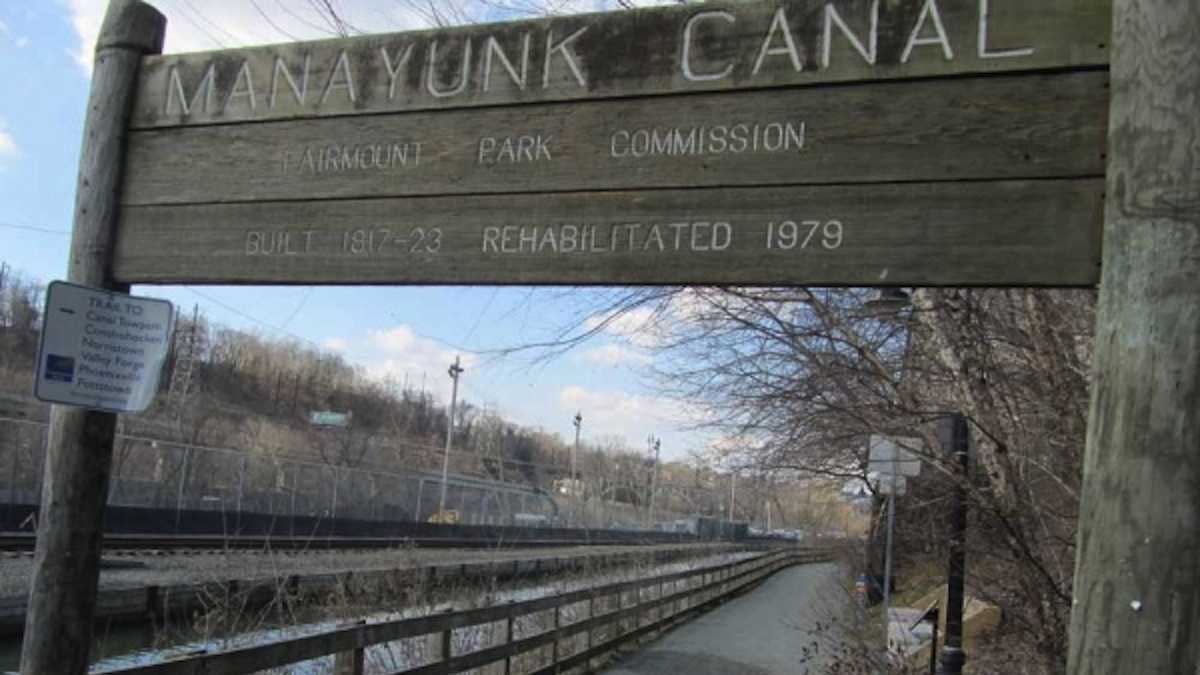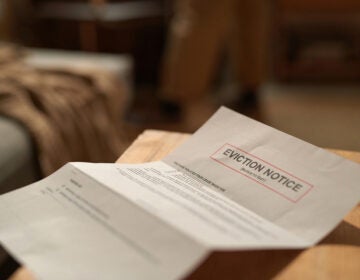Updated towpath design aims to make boardwalk a ‘center of Manayunk’

(Aaron Moselle/WHYY, file)
Plans are nearly complete for the million-dollar redesign of a former towpath that skirts the Manayunk Canal.
On Wednesday night, designers presented the most recent updates on design enhancements to the boardwalk, which runs along the canal behind the Main Street business corridor and continues northbound past the Manayunk Bridge.
Project leaders have considered various ways to boost use of the boardwalk, which is about 40 years old and is still in good condition. The 12-foot wide towpath is owned by the city, and is predominantly used by joggers and bicyclists at present.
If implemented, the designs would change the way residents and visitors experience the pathway.
“It makes the canal the center of Manayunk, not the backside,” said Kay Sykora, director of the Schuylkill Project.
Changes to the boardwalk
Chris Mendel of Andropogon Associates presented the refinements at the last of three public meetings held regarding the project, which focuses on the area between Lock Street and Green Lane.
The project divides the boardwalk into approximately a dozen sections, each presenting a unique challenge to project leaders.
According to Mendel, the current design incorporates more lights, drawing attention both to the canal and to the historic buildings that line the boardwalk. In some areas, the handrail that separates the path from the buildings will be either reduced or eliminated, allowing for the introduction of landscaping and niches that would accommodate seating areas.
In some places, the boardwalk would be extended by the introduction of grated steel decking. While some so-called “weed trees” and other intrusive vegetation could be removed, Mendel proposed the installation of overhead textile panels in certain areas to add visual interest to the “vertical plane.”
Major redesigns
Along with these overarching concepts, several sectors stand to be significantly redesigned.
At Canal View Park, Mendel proposed a major reduction in vegetation to increase visibility and improve the sense of connection to the river. Coupled with proposed multi-tiered seating along the boardwalk, the changes could allow the location to be used for larger public events.
Near the intersection of Green Street, a set of steps would be replaced by an ADA-compliant ramp that would also better serve bicyclists. Mendel said that the upgrade would foster better interaction between Main Street and the towpath, which sits at a lower grade.
The boardwalk’s entrance at Lock Street also received attention. While it serves as a public entry point for both the boardwalk and Lower Venice Island, much of the adjacent land is held privately.
While hoping to call out the entrance with signage and banners on Main Street, Mendel expressed an interest in exploring temporary shelters along this route for recreation equipment retailers. He acknowledged that implementing these changes at Lock Street would require “tremendous public-private cooperation.”
Overall, the project’s cost is estimated to be between one and two million dollars.
Next steps
Within a few weeks, a draft report will be completed and posted to the Manayunk Development Corporation’s website for public review and comment. After this stage, project leaders will shop the plans around to local business leaders and city agencies to incite interest and secure funding.
They may also look across the river.
“Our biggest fans are in Lower Merion,” Sykora said, noting the interest in Manayunk by Montgomery County residents.
The project joins the company of several major capital projects being undertaken in Manayunk: The ribbon-cutting for enhancements to Lower Venice Island is expected to take place this fall, at which time work on the Manayunk Bridge trail is expected to commence.
Still pending is the rehabilitation of the canal itself, which needs additional funding from the state to fully implement a plan that introduces fresh water into the canal.
While there is no timeline for the funding process. Once monies are secured, both Sykora and Mendel agreed that the project could be completed within a year’s time.
WHYY is your source for fact-based, in-depth journalism and information. As a nonprofit organization, we rely on financial support from readers like you. Please give today.




